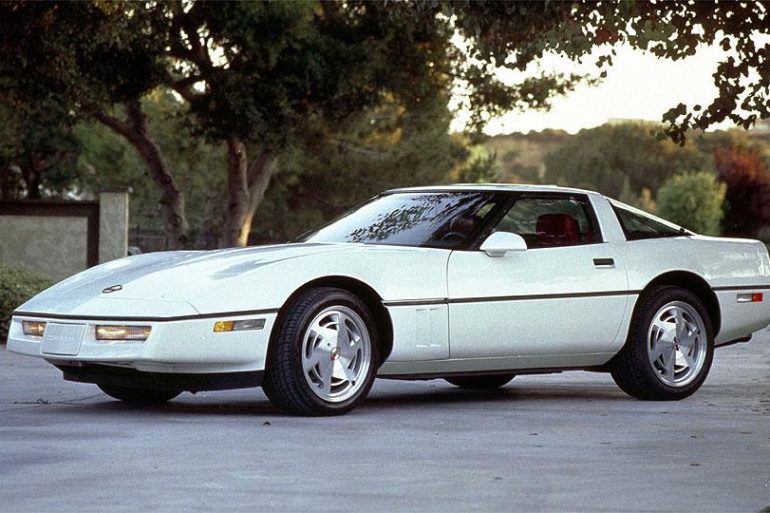1989 C4 Chevrolet Corvette Model Guide
History, Specifications, VIN, Options, Performance, & More
In-Depth Guide / Special Models / Videos & Pics / Technical Research / Colors / Engines / The Market / Latest
Since its introduction in 1984, the C4 had undeniably evolved into a sports car that could hold its own as a contender amongst some of the staunchest sports car competitors from around the world.
With each passing model year, ongoing modifications to the engine, drive train, suspension and steering had transformed the C4 Corvette from a car that was recognized more for its handling than its performance into a machine which had successfully mated technology and horsepower.
The 1989 ZR-1 Corvette as photographed at Mireval, France. (Image courtesy of Car & Driver Magazine).
The result of this fusion had created a platform upon which Corvette’s engineers and designers could (and would) breathe life into a car which was even more powerful than anything that had come before it. The fullness of that potential would manifest itself late in the 1989 model year and would transform the future of Corvette for all time – and would give rise to one of the most sought after Corvettes of all time – the ZR1.

An important year for special Corvettes. The ZR-1, was engineered by John Heinricy and this lightweight was aimed directly at maintaining the Corvette's performance supremacy. With a specially built 475hp LT5 V-8 and a curb weight of less than 3,000 pounds, this vehicle quickly became a legend in enthusiast circles.
Get all the latest news stories, upcoming auctions, prices, videos and more about the 1989 Chevrolet Corvette! The latest headlines here.